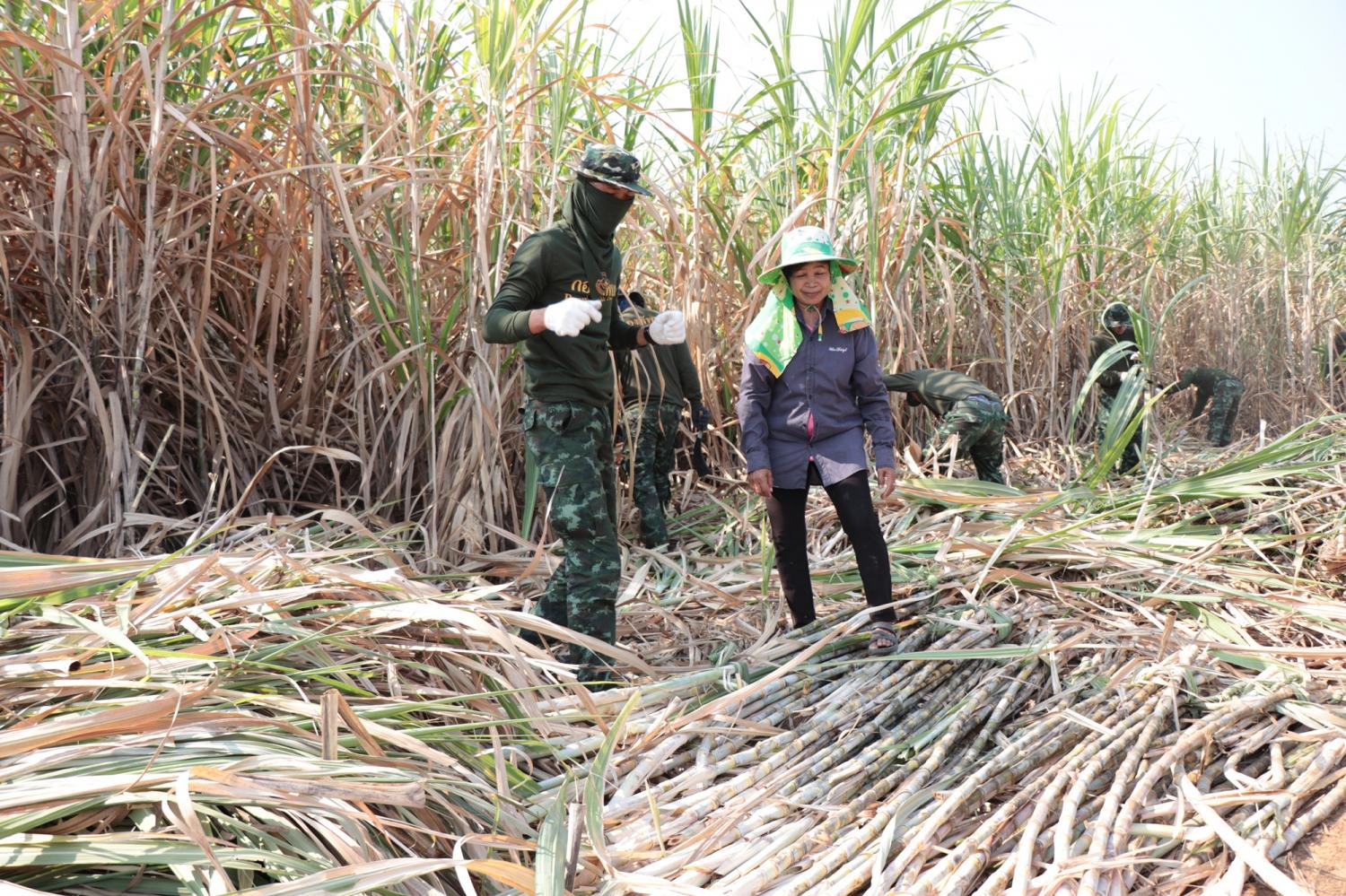
The government is being urged to support sugar-cane farmers with additional measures to harvest fresh output and discourage burnt sugar cane in order to curb pollution, says the Thai Sugar Millers Corporation (TSMC).
Both farmers and sugar millers prefer burnt sugar cane to fresh cane because the burning method is easier and has a lower operating cost.
Millers also give priority buying burnt output within 48 hours before the sweetness and weight decline.
Meanwhile, fresh sugar cane requires harvesters which are a huge investment for farmers.
But sugar-cane burning is now a serious problem in Thailand because it creates hazardous dust and particles such as those seen from last December to mid-April.
Sirivuth Siamphakdee, the TMSC's chairman, said the government is providing soft loans with a low interest rate for farmers to buy the harvesters, but sugar millers should also be able to access this financial source in order to buy machinery.
"It will be another option to increase sugar cane harvesters which will be sufficient for the harvesting period," he said.
The harvesting period depends on an announcement by the Office of Cane and Sugar Board (OCSB) to start the sugar-crushing season, normally during November to April.
Mr Sirivuth said the 2018-19 sugar-crushing season saw burnt sugar cane drop to 80.03 million tonnes, representing 61.11% of all sugar cane output for the season at 130.97 million tonnes.
The 2017-18 sugar-crushing season saw burnt output at 89.43 million tonnes, representing 66.28% of total output of 134.93 million tonnes.
"In the big picture, burnt sugar cane remains higher than 50% of output," Mr Sirivuth said.
The OCSB has implemented measures to encourage farmers to harvest fresh sugar cane rather than burnt output.
The price of burnt sugar cane will be reduced by 30 baht per tonne and each sugar miller has to purchase fresh output of at least 60% per day.
The cabinet on June 11 approved new measures to solve burning of plantation areas.
Millers have to purchase burnt sugar cane less than 30% per day in the 2019-20 sugar-crushing season.
The maximum level will decline to 20% in the 2020-21 season and to 5% in the 2021-22 season.
Burnt sugar cane is to be subject to a cut in its selling price by 5% per tonne in 2019-20, 10% in 2020-21 and 15% in 2021-22.
This plan, proposed by the OCSB, aims to remove burnt sugar cane in the next three years.